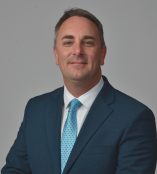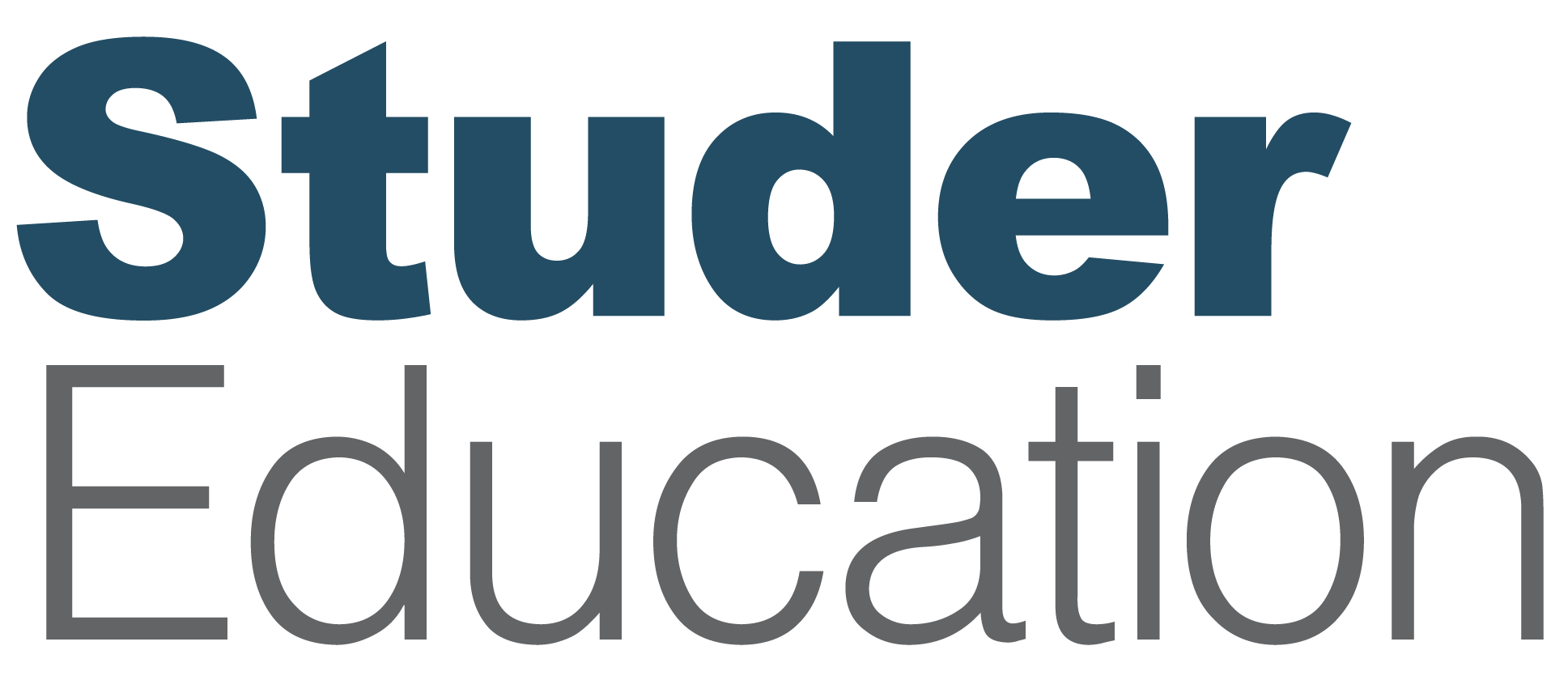
In Martin County School District, if it’s important enough to measure, it’s important enough to improve. Join Superintendent Michael Maine as he sits down with Dr. Janet Pilcher to discuss his data-driven approach to continuous improvement. Listen now to hear how the district strategically gathers and shares feedback, transforming it into action plans that drive lasting change.
This episode addresses questions such as:
- How can organizations create a continuous improvement cycle using data and feedback effectively?
- In what ways do feedback loops improve communication and understanding across departments?
- How can leaders create a culture where feedback is welcomed?
Latest Episodes
Michael Maine: We’re constantly in this continuous improvement cycle, using the survey data to keep moving the needle.
[Intro music plays in the background.]
Introduction
Janet Pilcher: Hello, everyone. Welcome to the Accelerate Your Performance podcast. I’m your host, Dr. Janet Pilcher, founder and president of Studer Education.
Just a quick reminder, if you missed any part of our Virtual Destination High Performance K12 Leadership Conference, all the impactful sessions are now available on demand. Visit Studereducation.com/events for a strong lineup of high impact sessions and strategies you can start applying immediately.
Today, I have the pleasure of speaking with Superintendent Michael Maine from the Martin County School District. He’s located on the beautiful Treasure Coast in my home state of Florida. Michael and I are going to dive into his district’s continuous improvement journey along with the important connection between strategic vision and alignment. We’ll also touch on the gift of feedback, and he’ll share some tactics that have been especially valuable to his leaders.
But first, let me tell you a little bit about Michael. He’s a veteran educator who brought his experience from Hernando County School District to Martin County in 2021. He quickly advanced to Deputy Superintendent in 2022 and Superintendent in 2023. Michael’s educational philosophy is that every child possesses inherent genius, which drives his commitment to creating environments where students are seen, supported, and empowered to succeed.
Let’s dive in and hear how this vision is taking shape in Martin County.
Interview
Janet Pilcher: It’s with great pleasure that I welcome Michael Maine, superintendent, Martin County School District. Michael, welcome today.
Michael Maine: Thank you for having me. So let’s get started. You’re early in the partnership with us and as we talked about, just thrilled to have you as a partner. Kathy Oropallo, your coach, says you hit the ground running. She sent a note out to us and said, “oh, you’ve got to make a connection here with the principles and the framework.”
So before we get into some specifics, just tell us a little bit about yourself and your background.
Michael Maine: Yes, thank you very much. So I’ve actually been in education now—this is coming up on my 20th year—born and raised in Brevard County. And then I headed over to the West Coast and spent about 17 years with the Hernando County School District, both as an assistant principal, principal, and then moved here to the Martin County School District to oversee principals as their principal supervisor.
And then from there, I was promoted to deputy superintendent overseeing all operations for the district. And then shortly after, when our superintendent at the time decided to become a recovering superintendent—
Janet Pilcher: [laughs]
Michael Maine: I was tapped by the school board to take over as superintendent. So this is my second year as superintendent.
Janet Pilcher: That speaks very highly of you, Michael. And that’s so good when you have been part of a district and you get to be kind of that internal candidate and person that moves. And I think especially when you have somebody who has the talent base who can do that, so, so valuable for your district and your people.
Michael Maine: Continuity is important.
Janet Pilcher: It really is. And more important probably than ever, in this day and time and through the changing landscapes of what we all go through in education through the years.
So let’s talk a little bit about your district support services survey. You completed that. We know part of the survey is part of the rollout process and operationalizing that data for improvements. So talk a little bit about the feedback and how that feedback translates into how you moved to improvement actions.
Michael Maine: Yeah, so it was very humbling. We’ve always had a survey process for our principals, but we’ve never really had a survey process for improvement for our departments and our divisions. And so they knew that this was coming. I was very, very strategic about it in nature and very forthcoming, and we’re going to take this data, and we are going to hit the ground running with putting immediate actionable plans in place.
So every single one of the divisions has now gone through their survey results. They have met with their teams. They have rolled it out to their teams. They’ve gone through some protocols on how to unpack everything that was in those survey results to include all of the comments that are actionable feedback that was given through the comments. And they are filling out action templates, action plan templates for me right now that they’re going to be required to turn in to address any of the areas of weakness.
We want to, as Kathy says, we want to be right and tight on those survey results. So anything that was in the yellow or to the left of the bell curve, we want to make sure that they’re putting an action plan in place on how they’re going to properly address those areas. And the areas that we’re really working on as a school district are timeliness and accuracy. And those were two areas of the survey results that we needed to do a much better job as a district.
Janet Pilcher: Yeah. And what you were talking about, Michael, the survey, we always have done surveys, right? I mean, that’s not new to us, but what has really been key to our learning and what we have focused on over the years is looking at the data, I mean, the data and having conversations around that data to build those improvement plans.
So I’m just curious, just a little bit more, when you were rolling that out to your leaders and you said it is humbling and it’s always humbling in order to see the feedback. You know, we say feedback is a gift, but it’s a very difficult gift sometimes to manage through to understand it’s a gift. How did your leaders, how did you manage that with your leaders? Just curious there.
Michael Maine: Yeah, a lot of conversations on emotional and psychological safety, you know, making sure that they weren’t taking this personally and perceptions are a reality. And we need to be able to take those individuals’ perceptions of a department or an individual within a department and really look at systems, right?
Janet Pilcher: Right.
Michael Maine: Taking the personal bias away and look at the systems that were in place or lack thereof as a result in what’s happening as an outcome. If an outcome is not positive, then there’s a breakdown in a system somewhere and to take it back to a systems approach or a breakdown in a system or lack of procedure or process in order to help with the psychological and emotional safety. And someone not internalizing that “they’re just attacking me” or “they just don’t like me” or “I had to give them a ‘no’ answer two weeks ago, therefore they’re beating me up on the survey.”
Janet Pilcher: Yeah, so good. Yeah, and we talk about that, you know, try to take it for what it is and not shift blame or rationalize or deny, you know, that data. So it takes people a while to do that, but I love the fact, I think, I thought that you would, is just to prepare them. It’s not like you just shoved the data there, but you really did a conversations in preparation for that.
Michael Maine: Yeah, so, you know, it was multiple meetings with myself and individual leaders, directors, and executive cabinet team members first. And then we actually ran the data through AI, and we asked AI to compartmentalize and kind of chunk the data in a way that allowed us to take the noise out and just give us more actionable trends that we could focus on.
So once we did that, I personally met with every one of the directors, and cabinet members went through that data with them based on what the AI produced. My chief of staff worked on that. And then we did an entire kind of, you know, talk and review of the data holistically before they then went out and met with their individual departments to go through a very similar activity.
Janet Pilcher: Yeah, that’s really good. And you know, thank you for doing that for them, because that makes the world of difference and how they actually move input to action.
Michael Maine: Yes.
Janet Pilcher: So, so just appreciate the time and effort that you put into that to help them get to that place. So another, survey rollout has been critical to us and having conversations around evidence. The other tactical strategy piece is rounding. So you’ve done, you’ve started rounding, and you’ve moved to a plus delta, and then process mapping. So can you tell us a little bit about that process that you’re using?
Michael Maine: Yeah, rounding is going really well, particularly with our finance department. You know, it’s often that our academic team is able to get out and do instructional rigor walks or what we would call rounding for them. But our finance team and our purchasing department and people on the operations side of the house don’t often get a chance to go out and meet with boots on the ground and round in a way that gives us feedback that we can immediately do a plus delta and act upon.
And so that’s been a game changer with our Chief Financial Officer and a couple of our accountants, being able to go out and conduct some rounding with principals and immediately see how the financial pieces are directly impacting the classroom or lack thereof and allowing the Chief Financial Officer to bring that back to Cabinet and, and address those areas of concern that either an AP or a principal had by way of good flow of communication.
So that’s a great positive example that we’ve had, a really quick short win on. Principals have immediately said “this has been a game changer. We understand our budgets more. We’re getting answers to our questions.” Misconceptions have been cleared up, and it’s been fantastic.
Janet Pilcher: Yeah. And it’s, you know, part of the work that we do that I love is with the operations department because sometimes they don’t get the attention, you know, that they need? You know, right, Michael? You know, they go to work, they do a job, but they don’t always see the interconnection of what they do that truly does make an impact on students’ lives and the and teachers and the schools. So, you know, that gives them purpose, too, in the work that they do. I hope, you probably are seeing that in them as well.
Michael Maine: For sure. And you know the Chief Financial Officer’s eyes, like, light up because he really does care about student achievement and how his job connects ultimately to the classroom. But he’s not often able to see it or hear it and touch it and feel it and so to walk classrooms with a principal while they’re rounding and to see that connection and how it’s so important allows him to view things differently through the lens of CFO when he’s around the executive table to solve problems.
Janet Pilcher: Yeah. So good, so good. And he’s able to carry that message to his team and really own that, so, you know, good for him as well and in, in doing that work. So you’ve also, so we’ve talked a little bit about survey rollout, using the data for improvement, using the rounding, and using that data for building purpose and improvement in conversations. You’ve also built process improvement and alignment strategies. So what impact are you starting to see from this work both internally within the district and maybe externally here as well?
Michael Maine: Well the number one issue that we tackled was HR onboarding and the activity that Kathy put us through with the executive team and the directors, my leadership team, really quickly uncovered that while we were onboarding employees, every department was onboarding their employee a little differently. There was no consistency in the way we rolled out the onboarding.
So once HR kind of passed the employee off to the hiring manager as, “hey they’re ready to go. They’re green lighted. They’re clear to work.” The hiring manager was now accepting the new employee and how each hiring manager continued the onboarding process with the employee was very different throughout the organization.
So we uncovered through that activity and process mapping that we needed to go back to the drawing board and we needed to make sure that we had clear procedural guidelines and a system in place that every hiring manager did the same thing. Once HR passed that employee off to the hiring manager, the hiring manager was immediately sending a welcome letter letting them know where they were parking at the district office, whether they were to bring lunch or not bring lunch, that they were going to bring them around and give them a tour of the district office, introduce them to key personnel that they were going to be dealing with on a regular basis, how they were going to access email, how they were going to receive their badge and their keys, their laptop computer. All of those pieces.
And what was really important that I was excited about was we uncovered that there was no connection to the strategic plan. A new employee being onboarded didn’t understand where they fell into the strategic plan and how their role or job was going to ultimately impact the goals within the strategic plan. So we’re now requiring all hiring managers to take some time to review the strategic plan and how their job function ties to an alliance with the strategic plan.
Janet Pilcher: Yeah, that’s so, so good. I mean, such a good, so, so good in having the conversations of building the process piece, but really learning how to build a priority of connecting them to your plan to your strategic direction. You know, you’ve read it in the book. When I look at the “be accountable” chapter, you know, accountability is really not putting something on top of others. It’s more of how do we do the right work to deeply connect people to the work so they know that what they do is making a difference so they can see themselves in the work, right, Michael?
So, you know, that’s all of what you’ve talked about today is really helping people see themselves in the work and how what they’re doing really does impact others and can make a difference in the lives of students that we serve.
Michael Maine: Yeah, the other thing I think that was really important and impactful for me was after we went through the survey activity with all my directors and my executive cabinet, they kind of said to me as the superintendent, “you know, Mr. Maine, well, what is your expectation when we go back and we meet with our teams and our departments? You know, how can we be clear in what the expectation is for accessibility and accuracy and timeliness and operations and attitude? Like what would you expect to be that defining moment or that ‘Martin way,’ if you will?”
And so it gave me the ability to say, “You know what? Fair enough. I’m going to operationalize that, I’m going to put that into a procedure, I’m going to put that into a system. And so I went back to my office, and I took the time to go through each of those key areas that are on the survey, and I put my superintendent’s expectations into a document that I then shared out with all departments so that when they met with their teams, they were able to say, “here’s the superintendent’s expectations with timeliness, that you are to reply or close the loop within 24 to 48 hours of an email or a phone call. When we talk about accessibility, make sure that you’re putting principals first. That when a principal calls, you prioritize a principal’s call over any other call that you make because they’re serving our students and they’re serving our schools.”
And so we did that in each of the areas and made sure that they knew. And I can share that document—
Janet Pilcher: Yeah, I’d love it.
Michael Maine: —with you, but that allowed there to be clarity and clear is kind, right? As we talk—
Janet Pilcher: It is
Michael Maine: And so I was able to be very clear in my expectations.
Janet Pilcher: And the fact that they asked you, so good. They said, tell me what, because people want to hit the mark, Michael. They really want to hit the mark. The majority of people are like, “If you just tell me what right looks like in your mind, that I can, I can hit that mark, or I can work to hit that mark.” So good for you to do that and good for them to ask for that. That speaks highly of the type of work environment that you have.
So as we close today, and we’re, you know, we’re, you’re looking at the past year of work, we’re getting close to the end of the school year, not quite there, but getting to that place. You know, what are you most proud of that’s really built momentum in your district?
Michael Maine: I think bringing everyone around a strategic focus and consistency and clarity in our work. So like it’s, I’ve got to call it, it’s our way of work, right? This is the common language that we’re going to speak, it’s going to become our way of work as the Martin County School District as we strive to become, you know, my goal is to become the number one school district in the state of Florida. And as our goal is set on that, putting all of these best practices in place, using the common vocabulary, implementing the rounding, making sure that we’re constantly in this continuous improvement cycle, using the survey data to keep moving the needle and giving us pulse checks on how we’re doing and if we’re continuously, you know, moving in the right direction on where we want to go as a district and just making sure that there’s that strategic alignment—that it’s all focused around that common vision and mission of where we want to go. And that all aspects of the organization, whether it’s from teachers, to our principals, custodians, secretaries, everybody speaking the same language and moving in the same direction.
Janet Pilcher: Yeah. And just again, thank you for your leadership in driving this. Without you, that doesn’t happen. You know, and that’s the, that’s the best part of our work is we get an opportunity to connect with superintendents and, and their executive teams. And without you all, really, this work doesn’t occur. And the people in your organization don’t have that opportunity to really do the worthwhile work that they come, you know, to do each and every day. Ee’re lucky in that regard that people show up to do that. So just thank you so much for what you do for everyone.
Michael Maine: Well, I appreciate it. And we’re very excited. And I’m very pleased with our the step we took to partner with Studer and to begin this work and this process. And I’m really looking forward to the next three years in this journey together and to see how far we come in that three year period. So it’s a pleasure.
Janet Pilcher: Thank you, Michael. I am as well. Have a good rest of the year. And I know you’re going to end with great success. Thank you so much.
Michael Maine: You too. Thank you.
Conclusion
[Outro music plays in the background.]
Janet Pilcher: Michael, thank you for sharing your experiences and insights with us today. Your emphasis on clarity, that is clear is kind, particularly resonates and offers a valuable reminder for all of us leading change.
Like Michael, I hope we all carry forward a commitment to listening to and connecting with our teams, hearing their feedback and walking alongside them. Michael is a reflective practitioner and leader and models that for his team. You can tell just through the conversation that he takes his leadership very serious, and that he is there for his team to be the best that he can be. And isn’t that the heart of why we do what we do? To understand that how we as leaders can model the way so that students have the best opportunity to be at their best and support our families to do the same.
As always, thank you for tuning into this episode of Accelerate Your Performance. I look forward to seeing you next week as we continue to work together to achieve organizational excellence. Have a great week, everyone.
Featured Guest

Michael Maine
Superintendent • Martin County School District, FL
-
Janet Pilcher President








